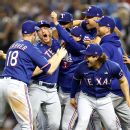10 busts to avoid in 2024
Our strong fantasy baseball opinions aren’t always focused squarely on the positive. We all have our dislikes, too.
Last week, we examined the players I feel most strongly about entering 2024. Today, let’s turn the tables and examine the players I’m most avoiding. Again, every player has value, and this year’s list is full of intriguing names — every single one of them a player I’d be happy to draft at a certain price point. By all indications this preseason, however, every single player listed below is being overvalued.
Let’s get started!
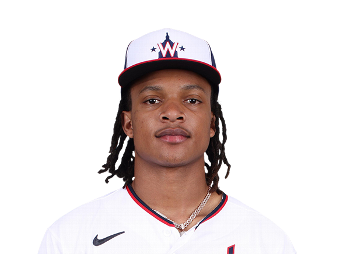 CJ Abrams, SS, Washington Nationals: His ascension from batting eighth to the leadoff spot last July 7 was a move that, at the time, seemed to be more about Luis Garcia Jr.’s struggles in the No. 2 spot than anything Abrams had done to earn the promotion. Abrams proved to be a great fit there, however, posting elevated 6.5% walk and 82% contact rates while stealing 36 bases (on 38 attempts) over 73 games. Still, even with the improvements, his OBP over that time was just .316 (below the league average) and he had a barely-20th-percentile 35.8% hard hit rate.
CJ Abrams, SS, Washington Nationals: His ascension from batting eighth to the leadoff spot last July 7 was a move that, at the time, seemed to be more about Luis Garcia Jr.’s struggles in the No. 2 spot than anything Abrams had done to earn the promotion. Abrams proved to be a great fit there, however, posting elevated 6.5% walk and 82% contact rates while stealing 36 bases (on 38 attempts) over 73 games. Still, even with the improvements, his OBP over that time was just .316 (below the league average) and he had a barely-20th-percentile 35.8% hard hit rate.
You’d think those latter numbers might mute some of the enthusiasm surrounding Abrams entering 2024, as he is still surrounded by one of the game’s weaker supporting casts — but it hasn’t. He’s being drafted roughly three rounds ahead of his ESPN valuation in points leagues, and has been a top-45 overall selection in all eight NFBC (National Fantasy Baseball Championship) main event drafts thus far. Abrams would need to take a sizable step forward from his 2023 final numbers to deliver profit for those prices.
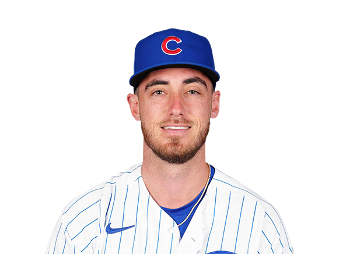 Cody Bellinger, OF/1B, Chicago Cubs: While his delayed re-signing shouldn’t present any conditioning issues — hitters need less time to gear up for the regular season than pitchers — Bellinger’s magical 2023 (in spite of less-than-stellar underlying metrics) remains a regression concern. Willi Castro, Paul DeJong and Brenton Doyle all had better Barrel and hard-hit rates than Bellinger, who does have an injury history, having made four trips to the IL totaling 90 missed team games over the last three seasons. It’s asking a lot for him to repeat his bounce-back numbers, yet he’s going within the top-75 overall in ESPN points leagues.
Cody Bellinger, OF/1B, Chicago Cubs: While his delayed re-signing shouldn’t present any conditioning issues — hitters need less time to gear up for the regular season than pitchers — Bellinger’s magical 2023 (in spite of less-than-stellar underlying metrics) remains a regression concern. Willi Castro, Paul DeJong and Brenton Doyle all had better Barrel and hard-hit rates than Bellinger, who does have an injury history, having made four trips to the IL totaling 90 missed team games over the last three seasons. It’s asking a lot for him to repeat his bounce-back numbers, yet he’s going within the top-75 overall in ESPN points leagues.
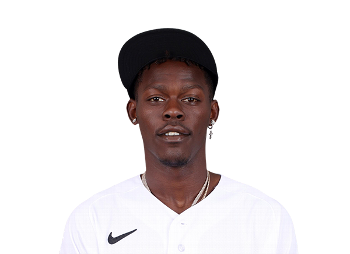 Jazz Chisholm Jr., OF, Miami Marlins: His per-162 career averages of 28 homers and 32 steals might be tantalizing to rotisserie-league managers, but bear in mind that, since he debuted in 2020, he has made five trips to the IL (excluding stints due to COVID-19) totaling 174 missed team games. Chisholm is also an mediocre fit for most every league scoring type except rotisserie as 99 other hitters who had at least as many as his 1,193 plate appearances since his debut have exceeded his 2.02 fantasy points per game. I want to see the breakthrough from him before I’d invest at his asking price.
Jazz Chisholm Jr., OF, Miami Marlins: His per-162 career averages of 28 homers and 32 steals might be tantalizing to rotisserie-league managers, but bear in mind that, since he debuted in 2020, he has made five trips to the IL (excluding stints due to COVID-19) totaling 174 missed team games. Chisholm is also an mediocre fit for most every league scoring type except rotisserie as 99 other hitters who had at least as many as his 1,193 plate appearances since his debut have exceeded his 2.02 fantasy points per game. I want to see the breakthrough from him before I’d invest at his asking price.
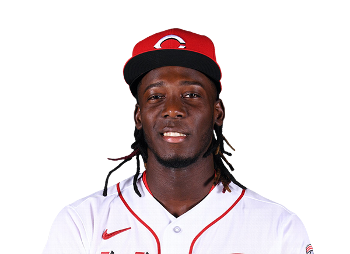 Elly De La Cruz, 3B/SS, Cincinnati Reds: In ESPN average drafts, he’s going roughly 75 spots earlier than his valuation, and in those aforementioned NFBC drafts, he has been selected 16th, 16th, 17th, 19th, 22nd, 22nd, 23rd and 25th overall. To be clear, I love the guy from a projecting-his-career perspective. He is a foundational piece on one of my most competitive simulation-league teams. Those asking prices, however, are completely out of control, considering he hit just .191/.272/.355 with a 36.0% strikeout rate after the All-Star break last season after starting on a positive note — pitchers exploiting the holes in his swing and his struggles with breaking pitches.
Elly De La Cruz, 3B/SS, Cincinnati Reds: In ESPN average drafts, he’s going roughly 75 spots earlier than his valuation, and in those aforementioned NFBC drafts, he has been selected 16th, 16th, 17th, 19th, 22nd, 22nd, 23rd and 25th overall. To be clear, I love the guy from a projecting-his-career perspective. He is a foundational piece on one of my most competitive simulation-league teams. Those asking prices, however, are completely out of control, considering he hit just .191/.272/.355 with a 36.0% strikeout rate after the All-Star break last season after starting on a positive note — pitchers exploiting the holes in his swing and his struggles with breaking pitches.
De La Cruz plays for an up-and-coming team overflowing with infield talent that can spell him if his struggles extend into 2024, and he’s going to take time to realize the 30/30 (and arguably 30/50) potential many see in him. I’m out on him this year but I expect to be “all in” on him for 2025 if he disappoints fantasy managers this season, greatly lowering his future asking price.
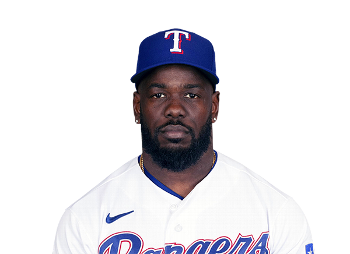 Adolis Garcia, OF, Texas Rangers: This one is entirely about the asking price, that of a top-75 overall pick in points-based leagues or top-50 in NFBC formats. Garcia is clearly seeing the classic “postseason hero” bump in price, a common trap in fantasy. This isn’t to say he’s a bad player — far from it — as he exhibited huge surges in both walk and hard-hit rates while hitting a career-best 39 home runs in 2023. Unfortunately, Garcia also declined sharply in terms of stolen bases and, in spite of his improved selectivity at the plate, he’s still one of the most K-prone hitters in baseball. Don’t get carried away by his magical October.
Adolis Garcia, OF, Texas Rangers: This one is entirely about the asking price, that of a top-75 overall pick in points-based leagues or top-50 in NFBC formats. Garcia is clearly seeing the classic “postseason hero” bump in price, a common trap in fantasy. This isn’t to say he’s a bad player — far from it — as he exhibited huge surges in both walk and hard-hit rates while hitting a career-best 39 home runs in 2023. Unfortunately, Garcia also declined sharply in terms of stolen bases and, in spite of his improved selectivity at the plate, he’s still one of the most K-prone hitters in baseball. Don’t get carried away by his magical October.
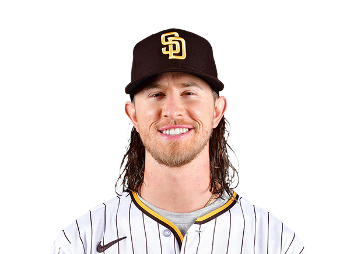 Josh Hader, RP, Houston Astros: Just because the Astros paid up to secure his services — he’s the second highest-paid closer ($19 million per year) behind only Edwin Diaz ($19.65 million) — doesn’t mean you should follow suit. Hader might be a “lights out” closer and one of the position’s most talented, but his command has been known to waver at times, leading to gopheritis (see: Sept. 2020, July 2021, July/Aug. 2022).
Josh Hader, RP, Houston Astros: Just because the Astros paid up to secure his services — he’s the second highest-paid closer ($19 million per year) behind only Edwin Diaz ($19.65 million) — doesn’t mean you should follow suit. Hader might be a “lights out” closer and one of the position’s most talented, but his command has been known to waver at times, leading to gopheritis (see: Sept. 2020, July 2021, July/Aug. 2022).
The Astros would do well by carefully managing his workload and, since they have one of the league’s deepest bullpens behind him, they’ll neither need to be patient through prospective rough patches nor press him to exceed 50 IP and/or 35 saves. I expect more from a closer going second (on average) at his position.
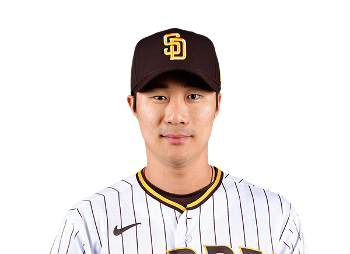 Ha-Seong Kim, 2B/3B/SS, San Diego Padres: It’s rarely advisable to pay the asking price for a player coming off a career year, especially one fueled by sizable boosts in plate appearances as well as green lights on the base paths. Kim made meaningful improvements in many regards in 2023, becoming one of baseball’s best in terms of walk, chase and miss rates. However, he still registered poor numbers (near the league’s bottom) in terms of contact quality.
Ha-Seong Kim, 2B/3B/SS, San Diego Padres: It’s rarely advisable to pay the asking price for a player coming off a career year, especially one fueled by sizable boosts in plate appearances as well as green lights on the base paths. Kim made meaningful improvements in many regards in 2023, becoming one of baseball’s best in terms of walk, chase and miss rates. However, he still registered poor numbers (near the league’s bottom) in terms of contact quality.
His time hitting leadoff (ahead of Juan Soto) likely inflated his numbers. For 2024, Kim appears ticketed for the No. 5 spot in the order on a Padres team now sans Soto and with one of the game’s weakest lineups from spots 6-9. It’s tough making a top-100 case for Kim, which has been his asking price thus far in points leagues.
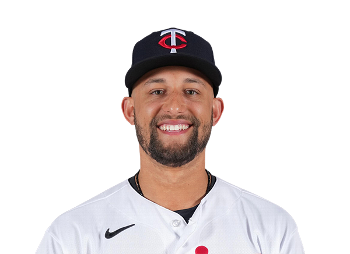 Royce Lewis, 3B, Minnesota Twins: Lewis has looked very, very good thus far at the MLB level, batting .301/.363/.566 with a 42-HR pace per 162 team games (if you include the 2023 playoffs). His injury history, however, is extensive and often compared (understandably) to that of teammate Byron Buxton. Since Lewis’ May 6, 2022 debut, he has made four trips to the IL totaling 213 missed team games.
Royce Lewis, 3B, Minnesota Twins: Lewis has looked very, very good thus far at the MLB level, batting .301/.363/.566 with a 42-HR pace per 162 team games (if you include the 2023 playoffs). His injury history, however, is extensive and often compared (understandably) to that of teammate Byron Buxton. Since Lewis’ May 6, 2022 debut, he has made four trips to the IL totaling 213 missed team games.
He has actually been on the active roster for only 81 games over that time and that doesn’t even account for the ACL surgery that cost him the entirety of the 2021 season while in the minors. They say that health is a skill, and Lewis’ lack of it makes him a dicey selection as a top-100 overall points league pick — as he has been in ESPN leagues thus far — and top-50 overall in NFBC main events.
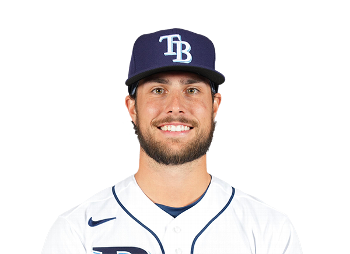 Josh Lowe, OF, Tampa Bay Rays: Even before the oblique injury that has him ticketed for the IL to begin the season, he was a fade on my list. Now, he’s a so-so stash for an IL spot in ESPN leagues, at best. Lowe’s 2023 represented a breakthrough, but it came with a continuation of some of the worst plate discipline in baseball, as his 73.4% contact, 35.7 chase and 6.2% walk rates all ranked in the bottom 30% of the league. He also struggled at times against left-handers, and plays for a team that loves to “mix and match” lineups.
Josh Lowe, OF, Tampa Bay Rays: Even before the oblique injury that has him ticketed for the IL to begin the season, he was a fade on my list. Now, he’s a so-so stash for an IL spot in ESPN leagues, at best. Lowe’s 2023 represented a breakthrough, but it came with a continuation of some of the worst plate discipline in baseball, as his 73.4% contact, 35.7 chase and 6.2% walk rates all ranked in the bottom 30% of the league. He also struggled at times against left-handers, and plays for a team that loves to “mix and match” lineups.
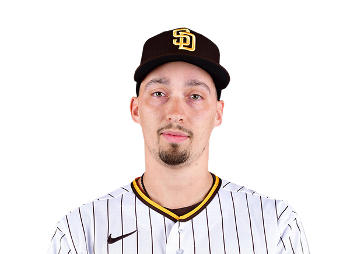 Blake Snell, SP, San Francisco Giants: His name has been a common find on “don’t draft” lists across the fantasy baseball industry this preseason. Even so, he continues to be drafted in the first six rounds of ESPN points-based leagues as well as one of the top-25 starting pitchers in rotisserie formats. Yes, Snell just won the NL Cy Young Award, but he did so with easily the league’s largest differential between his actual ERA (2.25) and Statcast expected ERA (3.77), not to mention he became the first such award winner to lead the majors in walks since Early Wynn way back in 1959.
Blake Snell, SP, San Francisco Giants: His name has been a common find on “don’t draft” lists across the fantasy baseball industry this preseason. Even so, he continues to be drafted in the first six rounds of ESPN points-based leagues as well as one of the top-25 starting pitchers in rotisserie formats. Yes, Snell just won the NL Cy Young Award, but he did so with easily the league’s largest differential between his actual ERA (2.25) and Statcast expected ERA (3.77), not to mention he became the first such award winner to lead the majors in walks since Early Wynn way back in 1959.
Snell’s late signing, too, presents a seasonal-workload concern for a pitcher who has had historical issues pitching deep into games. Jake Arrieta and Lance Lynn in 2018 are examples of pitchers who took until mid-March to come to terms with a new team — and both took noticeable statistical steps backwards in that season. Yes, such pitchers comprise a precariously small sample size, but coupling it with the other regression-related concerns surrounding Snell, he’s a hard pass for me.

